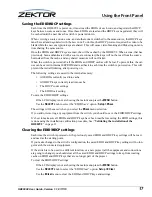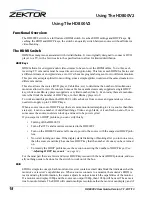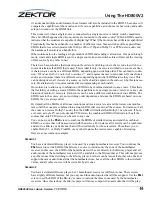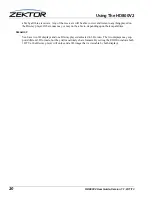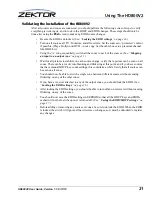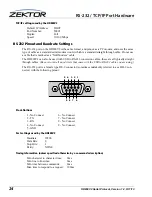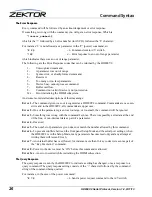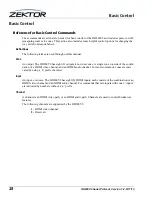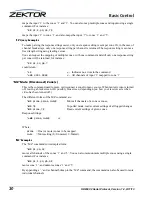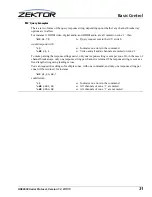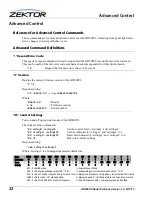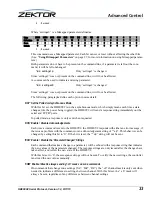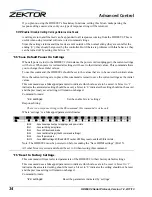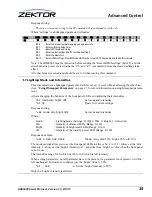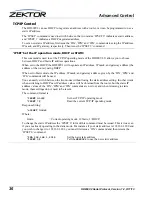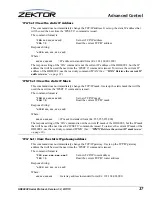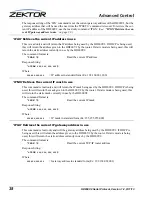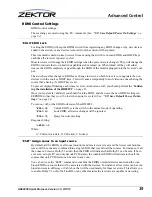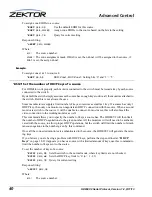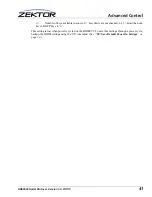
30
HD800V2 Serial Protocol, Version 1.2, 9/11/13
Basic Control
maps the input ‘2’ to the zones ‘1’ and ‘3’. You can also map multiple zones and inputs using a single
command. For instance:
^SZ @1,2,@3,@5,7$
maps the input ‘2’ to zone ‘1’, and also maps the input ‘7’ to zones ‘3’ and ‘5’.
‘SZ’ Query Examples
To make parsing the response strings easier, only one response string is sent per zone. Or, in the case of
channel breakaways, only one response string per channel is returned. The response string is sent as a
fixed length string using leading zeroes.
You can request the mapping of multiple zones, with one command, and still only one response string
per zone will be returned, for instance:
^SZ @1,@3,@4,?
could return:
^+$
<-
Indicates no errors in the command
^=SZ @001,002$
<-
All channels of input ‘2’ mapped to zone ‘1’
‘MZ’ Mute (Disconnect) Zone(s)
This is the command used to mute, or disconnect a zone from any source. When muted, video is turned
off, leaving a black screen. (Or possibly blue screen, depending upon how your receiver acts when
video has been turned off.)
The different forms of the MZ command are:
^MZ @
zone
,@
zone
,
mute
$
Mute all channels of a zone or zones.
^MZ ?$
In polled mode, reads current settings of all logged changes.
^MZ @
zone
,?$
Read current settings of given zones.
Response Strings:
^=MZ @
zone
,
mute
$
or,
Where:
@
zone
= One (or more) zones to be mapped.
mute
= Mute setting (0=Unmuted, 1=Muted).
‘MZ’ Examples
The ‘MZ’ command in its simplest form:
^MZ @1,@3,1$
mutes all channels of the zones ‘1’ and ‘3’. You can also mute/unmute multiple zones using a single
command. For instance:
^MZ @1,1,@3,@5,0$
mutes zone ‘1’, and unmutes zones ‘3’ and ‘5’.
By appending a ‘.’ and a channel bitmap to the ‘MZ’ command, the command can also be used to mute
individual channels.


